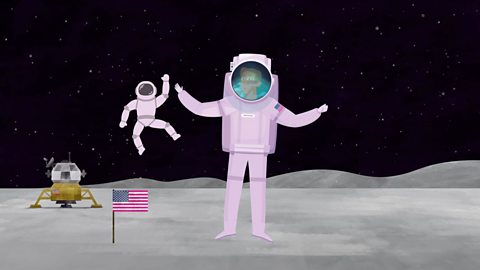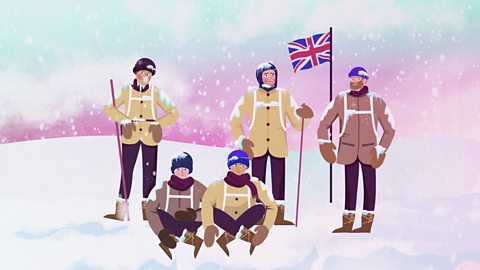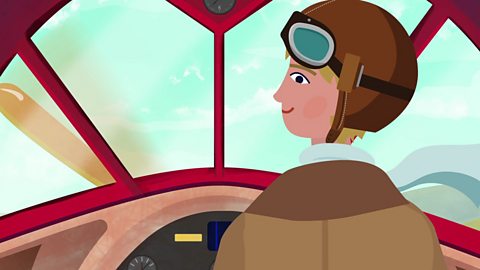OLLIE: Who shall we look up today?
FATIMA: My grandmother told me about this amazing explorer, Ibn Battuta. He was a Moroccan explorer from way, way back; the 1300s, I think. Can we look him up?
OLLIE: Sounds great. Holo-Lab, let’s meet Ibn Battuta.
HOLO-LAB: Searching. Searching… Explorer found. Ibn Battuta.
FATIMA: Wow! Before Henry VIII. Before Guru Nanak.
IBN BATTUTA: As-salamu alaykum!
FATIMA: Alaykumu s-salām. Tell us about the places you’ve explored.
IBN BATTUTA: My journey started when I wanted to undertake the Hajj, a pilgrimage to the holy city of Mecca, to visit the Kaaba, the house of God. I left when I was twenty one, in June 1325.
OLLIE: Was it far?
IBN BATTUTA: It was nearly 3,000 miles as the crow flies, from my home in Tangiers in Morocco, but I had to travel by land. I made a point of never travelling on the same road twice. And because I wanted to explore, I stopped at many wonderful places.
FATIMA: Where did you stop?
IBN BATTUTA: I travelled 2,200 miles to Alexandria which took 34 weeks, when I saw the lighthouse of Alexandria, before heading to Cairo where I saw the Great Pyramid of Giza. Two of the seven wonders of the ancient world. It was hard to get to Mecca. The first time I tried, I was beaten back by bandits so I spent Ramadan in Damascus, before heading south 810 miles to Medina and then finally, Mecca.
FATIMA: Did you walk all that way? How did you know which way to go?
IBN BATTUTA: I travelled using camels and I had the stars to guide me.
OLLIE: Why did you use camels?
IBN BATTUTA: Life in the desert is hard. There is little to eat or drink. Horses are no use there, but because camels have lived so long in the desert, they have adapted to travel far without water and to store fat in their hump to feed on. You can ride them or use them to carry things.
FATIMA: How do stars guide you?
IBN BATTUTA: We didn’t have satellite navigation like you do, to tell us which way to go. However, by observing the Sun, Moon and the planets, you can fix your position and work out in which direction you’re going.
FATIMA: What was the holy city of Mecca like?
IBN BATTUTA: It’s a special place for Muslims. I was so taken with it that I returned many times and spent many months there.
OLLIE: What did you do after you went to Mecca?
IBN BATTUTA: Normally after being away so long, you would go home but I didn’t go back to Morocco for 24 years. My Rihla, or journey, lasted for 29 years, covering 75,000 miles. That’s further than three times around the Earth. I visited 44 countries, from Tangiers in the west, and travelled as far east as Quanzhou in China where I saw the Great Wall. And from Bolghar in modern day, Russia to Kilwa in Tanzania. I witnessed the spread of Islam across the globe. As I travelled through places like India and Mali in Africa, I met many important people like princes and princesses, queens, kings and emperors.
FATIMA: Wow!
OLLIE: What was it like when you returned home?
IBN BATTUTA: I had lived many lifetimes on my travels. The place I came back to in 1355 was not the same as the one I left. Imagine being away from your friends and family for 29 years. But I had with me a wife, and began a new life. I wrote the story of my travels and later in life, became a judge.
FATIMA: Thank you for sharing your journey with us, Ibn Battuta.
OLLIE: Goodbye.
IBN BATTUTA: Ila-likaa.
Video summary
This animated film follows Ibn Battuta’s epic journey and extraordinary exploits after his first pilgrimage to Mecca.
Through Battuta's marathon 29-year journey you can explore core learning topics with your class, such as creative writing and writing a journal, desert adaption including evolution, pilgrimage and Hajj, culture and art and early Islamic civilisation.
This short film is from the BBC series, Explorers.
Teacher Notes
This short film about Ibn Battuta can be used as a starting point for a cross-curricular project based around Ibn Battuta's life and journey, or it could be used in conjunction with one or more of the other Explorers films to compare how travel and exploration have changed over time.
This could be the starting point for learning in science around evolution and adaptation, as Ibn Battuta explains how camels are suited to life in the desert.
It is also ideal as a stimulus for learning about maps, meeting many curriculum objectives for geography:
- Pupils could locate the countries Ibn Battuta visited, using atlases and maps of the world, and they could use their maths skills to measure and calculate the distances he traveled.
- This would be an ideal place to make use of digital mapping software.
Pupils could have a go at writing their own 'Rihla': an account of a real or imagined journey they have taken, trying to inspire people to visit the places they describe (using persuasive and descriptive language).
This could be linked with a geographical study of a particular region or country, or a place local to the school. You could compare Inb Battuta's Rihla to modern day travel writing.
The learning in this film could be linked to an RE topic on Pilgrimage or Mecca, or wider learning on Islam.
It could also be linked to learning in history about Early Islamic civilisation.
Children could investigate Islamic art and create geometric patterns of their own, perhaps to decorate a box they have made from wood as part of the technology curriculum, or to decorate the walls of your classroom.
Learning on geometric patterns could also be linked to learning about shapes in maths. In music lessons, children could compare the musical traditions of some of the countries Ibn Battuta visited.
This short film could be used to study a variety of cross-curricular topics at KS2 in England and Northern Ireland, Progression Step 3 in Wales and 2nd Level in Scotland. Including;
- Maths
- Geography
- English
- History
- Art and design
- Science
- Music
More from Explorers
Neil Armstrong. video
Neil Armstrong's historic voyage to the Moon is explored in this short animated film for primary pupils.

Christopher Columbus. video
This short animated film for primary pupils takes a look at Christopher Columbus' epic adventures to the Americas and the changes in travel and exploration over time.

Robert Falcon Scott. video
Robert Falcon Scott's ill-fated journey to the South Pole is brought to life in this short animated film for primary pupils.

Amelia Earhart. video
The life of Amelia Earhart, a courageous pilot who broke records in the air, is introduced to primary pupils in this short animated film.
